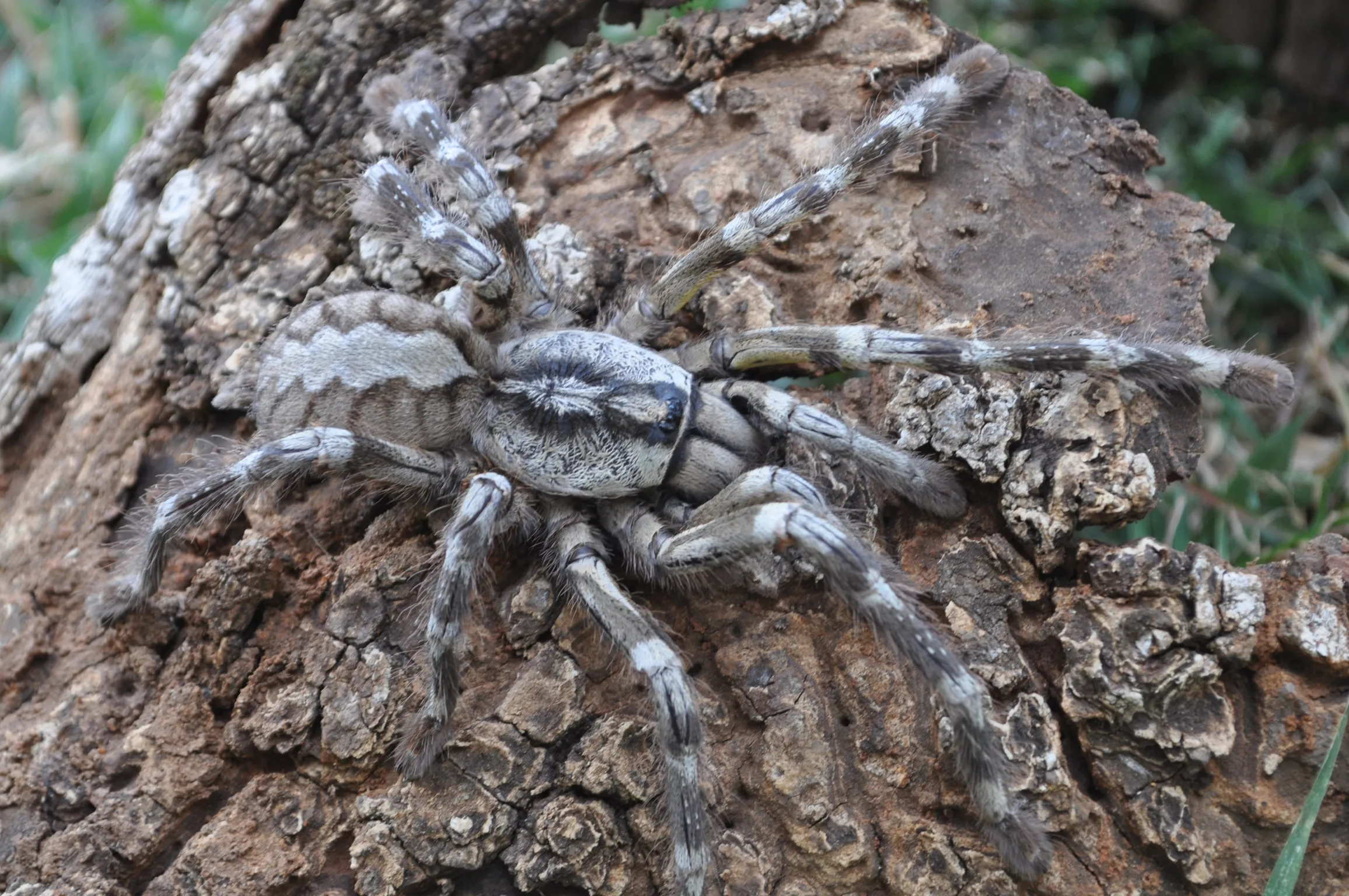What Impacts Tarantula Size?
The fascinating world of tarantulas presents a diverse array of sizes, making the simple question of their average height and weight surprisingly complex. Several factors intertwine to dictate the ultimate size of these intriguing creatures. Understanding these elements provides a deeper appreciation for the variety within the tarantula family and assists in responsible pet ownership. Genetics play a crucial role; just as in other animal species, certain tarantula species inherently grow larger or smaller than others. Environmental influences, such as the availability of food and the temperature and humidity of their habitat, can also significantly impact their growth. Proper nutrition is paramount, with a balanced diet of appropriate-sized insects contributing to optimal development. Furthermore, the age of the tarantula influences its size, as they continue to grow with each molt. Therefore, when considering the average height and weight of a tarantula, it’s essential to recognize that these values represent a range rather than a fixed measurement. The specific species, its life stage, and the environment it thrives in all contribute to its ultimate dimensions.
Species and Size Variance
The tarantula family, Theraphosidae, includes a wide spectrum of species, each with its unique characteristics. This diversity extends to their size, with some species remaining relatively small, while others can become quite substantial. The variation in size is a significant aspect of tarantula taxonomy and is important for prospective keepers to understand. The Goliath Birdeater (Theraphosa blondi) is often cited as one of the largest tarantula species, with leg spans that can exceed 11 inches and weights upwards of 6 ounces. Conversely, smaller species like the Trinidad Olive (Holothele incei) are considerably less imposing, often measuring only a few inches in leg span when fully grown. This stark contrast highlights the size variance across the tarantula family. Size variance also influences the care they need, from the dimensions of their enclosures to the size of the prey they can consume. Understanding the size potential of a tarantula species is critical when planning their care.
Smaller Species

Smaller tarantula species are captivating in their own right, often offering a more manageable size for keepers and requiring less space. These species are typically ideal for those new to tarantula keeping or those with limited space. Examples include the aforementioned Trinidad Olive tarantula and the Cobalt Blue tarantula (Cyriopagopus lividus). These smaller species usually have leg spans that range from 3 to 5 inches. They frequently exhibit vibrant colors and interesting behaviors, making them appealing to enthusiasts. Their care requirements are similar to those of larger tarantulas, including appropriate humidity, temperature, and a diet of insects. Despite their size, these tarantulas are still fascinating creatures, and their care can be equally rewarding as that of larger species. When choosing a smaller species, it’s vital to research their specific needs to ensure they receive the best possible care. This includes the appropriate size enclosure and prey items, and any special humidity or temperature needs.
Larger Species
The giants of the tarantula world, the larger species, are often the most sought-after. The Goliath Birdeater is a prime example, as is the Pinkfoot Goliath (Theraphosa apophysis) and various other species within the Theraphosa and Lasiodora genera. These tarantulas can have leg spans exceeding 10 inches and weigh several ounces. Due to their size, these species require larger enclosures and a more robust feeding schedule. Additionally, their size can influence their temperament, with some larger species exhibiting more defensive behaviors. Keeping larger tarantulas requires a commitment to providing them with appropriate space, a stable environment, and a diet that supports their growth. While impressive in size, it’s crucial to remember that these tarantulas, like all others, are best observed from a distance and handled with extreme caution. Their sheer size can make them more intimidating, but with careful attention to their needs, they can thrive in captivity.
Average Height of a Tarantula
Determining the average height of a tarantula is not as straightforward as measuring the height of a mammal. Tarantulas are measured by their leg span, which is the distance from the tip of one leg (fully extended) on one side to the tip of the leg on the opposite side. Depending on the species, the fully extended height varies widely, ranging from as little as 2-3 inches for smaller species, up to 10-11 inches or more for larger species like the Goliath Birdeater. When referring to height, it’s essential to clarify that it is the leg span being discussed rather than the actual height of the tarantula’s body. This means understanding the species’ full potential leg span is crucial for estimating the average height. The measurements will vary based on the tarantula’s age and the current molting stage.
How to Measure Tarantula Height?

Measuring a tarantula’s leg span, which is the practical equivalent of height, requires patience and care. The safest way to measure a tarantula is to gently encourage it to walk on a clear surface. Place a ruler or measuring tape beneath the tarantula and carefully extend its legs. The key is to measure the distance from the tip of the leg on one side to the tip of the leg on the opposite side. This is best done when the tarantula is calm and in a relaxed state. Avoid any actions that might startle or agitate the tarantula, as this could lead to inaccurate measurements or even potential defensive behaviors. It’s useful to have a partner to help keep the tarantula in place and measure its leg span accurately. Documentation is also important; note the date of the measurement and any changes. This record can help in understanding the tarantula’s growth and overall health.
Average Weight of a Tarantula
Tarantula weight varies greatly depending on species, age, and overall health. Weight can range from a fraction of an ounce for smaller, younger tarantulas to several ounces for larger, mature individuals. For instance, a mature Goliath Birdeater can weigh upwards of 6 ounces, while a smaller species might weigh less than an ounce. Keepers often use weight as a health indicator; a sudden loss or gain in weight may signal an issue, such as dehydration, malnutrition, or a problem with molting. Regular weight checks are crucial for monitoring a tarantula’s development and well-being.
Factors Affecting Weight
Several factors influence a tarantula’s weight. Diet and nutrition have the most significant impact; a well-fed tarantula will naturally weigh more. The size and frequency of meals must be appropriate for the species and age. Age is also a critical factor, as younger tarantulas typically gain weight more rapidly than older ones. Molting cycles can cause fluctuations in weight, as tarantulas often shed their exoskeletons and may lose weight before molting. Furthermore, environmental conditions, such as temperature and humidity, can affect weight; too little humidity can lead to dehydration. A tarantula’s overall health significantly affects its weight. An unhealthy tarantula may not eat properly, leading to weight loss. Always keep an eye on these details and consult with experienced keepers or a veterinarian specializing in exotic animals if you have any concerns.
Diet and Nutrition

A tarantula’s diet significantly impacts its weight and overall health. Tarantulas are carnivorous and primarily eat insects, such as crickets, roaches, and mealworms. The size of the prey should be appropriate for the tarantula’s size; a general rule is that the prey should be no larger than the tarantula’s abdomen. Overfeeding should be avoided, as it can lead to obesity and health issues. The frequency of feeding depends on the tarantula’s age and species, with younger tarantulas needing to be fed more frequently. Always ensure that the prey insects are gut-loaded before feeding them to the tarantula. Gut-loading involves feeding the insects nutritious food before giving them to the tarantula, providing the tarantula with better nutrition. Proper nutrition is vital for molting and healthy growth.
Age and Growth
The age of a tarantula directly influences its growth and weight. Tarantulas continue to grow with each molt, but the frequency of molting decreases as they age. Young tarantulas molt more frequently and gain weight faster than older ones. The growth rate of a tarantula varies depending on its species and the environmental conditions. Keeping a record of molts and measurements can help track a tarantula’s growth. As tarantulas get older, the frequency of molting decreases, and their growth slows. A mature tarantula will eventually stop molting and will no longer increase in size. It’s important to adjust their care, including feeding and enclosure size, based on their age and growth stage. This careful monitoring helps you recognize health problems and ensure optimal conditions.
Importance of Habitat
The habitat is extremely important to the tarantula’s overall health and directly impacts its height and weight. An enclosure should be appropriately sized for the species, with enough space for movement and the creation of burrows or hiding places. Temperature and humidity levels must be maintained correctly. The specific requirements vary depending on the species, but most tarantulas thrive in a warm, humid environment. Substrate, or the material at the bottom of the enclosure, also plays a crucial role, providing a surface for burrowing and maintaining humidity. Ensure a clean and stress-free environment. The ideal setup mimics the tarantula’s natural environment. By creating the right environment, you can ensure your tarantula thrives.
Providing the Right Enclosure

The enclosure must be suited to the tarantula’s size and species. A larger tarantula needs a larger enclosure to prevent cramped conditions. The enclosure should also be escape-proof, with a secure lid. Ventilation is essential to prevent mold and maintain air quality, but it should not compromise humidity levels. The substrate should be appropriate for the species and maintain the correct moisture level. The substrate should be deep enough to allow the tarantula to burrow. Add hiding places like cork bark or artificial plants. This ensures the tarantula feels safe and secure. Regularly clean the enclosure and remove any uneaten prey or waste to maintain a healthy environment. Consider providing a water dish for the tarantula to stay hydrated. A proper enclosure is crucial for the tarantula’s well-being, ensuring proper growth and weight maintenance.
How to Monitor Tarantula Health based on Weight & Height
Monitoring your tarantula’s weight and apparent height (leg span) is crucial for assessing its health. Regularly weigh your tarantula using a digital scale, recording the measurements to track any changes. Sudden weight loss can indicate problems such as dehydration, illness, or a refusal to eat. Conversely, excessive weight gain may signal overfeeding or potential health issues. Visually inspect the tarantula for any changes in appearance, such as a shrunken abdomen (indicating dehydration) or lethargy. Also, observe their behavior; a healthy tarantula should be active and responsive. Compare your tarantula’s size and weight to the standards for its species and age. Keep track of molting, noting the timing and any difficulties. These data points together give a comprehensive view of the tarantula’s health, helping you to respond quickly if any problems arise. Regular monitoring enhances the tarantula’s well-being and offers peace of mind.
Regular Weighing Techniques
Accurate and consistent weighing techniques are essential for monitoring a tarantula’s health. Use a digital scale to measure the weight. Make sure the scale is calibrated and provides accurate readings. Place a small container (like a lightweight plastic cup) on the scale and zero it. Carefully encourage the tarantula to walk into the container, if possible. Otherwise, use a soft brush to gently guide the tarantula. Weigh the tarantula regularly, such as weekly or monthly, depending on its age and health. Record the weight, along with the date, and any observations about the tarantula’s behavior or appearance. Be mindful of the tarantula’s molting cycle. Weight fluctuations can occur just before and after molting. If you observe any significant changes in weight or any unusual behavior, consult with a veterinarian specializing in exotic animals or experienced tarantula keepers. Consistent and well-documented weighing provides useful insights into a tarantula’s health and growth.
